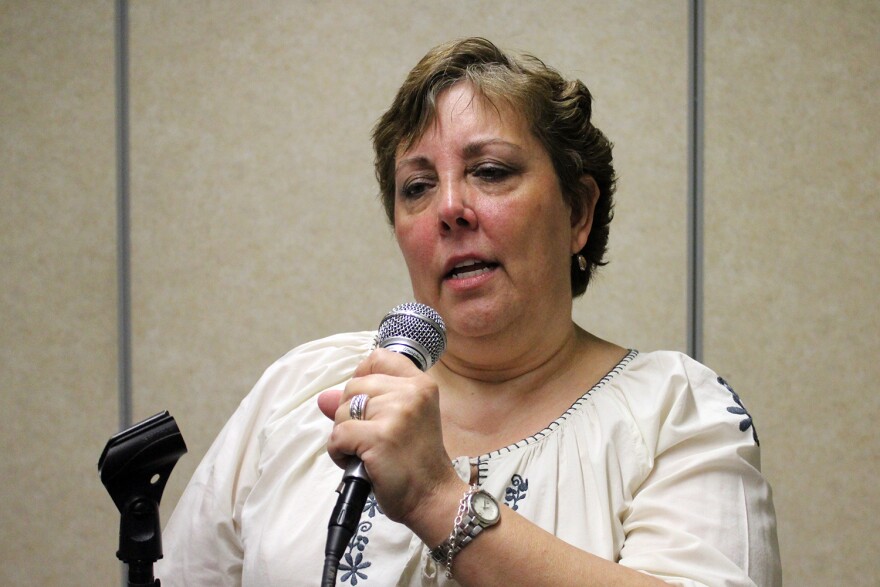More than a hundred people packed into a room at the Hazelwood Civic Center last night to hear about radioactive contamination outside homes near Coldwater Creek.
The U.S. Army Corps of Engineers has found radioactive soil in three backyards on Palm Drive in Hazelwood and is continuing to test the neighborhood for contamination. For now, the testing is limited to yards near the creek, but the Corps said it would likely start testing residential basements in the future, if they have been flooded by creek water.

Representatives of the Corps, the Missouri Department of Natural Resources and the St. Louis County Department of Public Health all gave brief presentations. The Coldwater Creek Facebook group shared updated maps of cases of cancer and other diseases gathered through an online survey of current and former residents of the neighborhoods around the creek. The group is trying to get “downwinder” status for those neighborhoods under the federal Radiation Exposure Compensation Act. That would provide funding for educational outreach and compensation to affected communities.
After their presentations the speakers took questions from the public.
For more than an hour and a half, attendees raised their concerns: Where will the Corps be testing? Which neighborhoods could be contaminated? Are residents at risk?
Many questions could not be fully answered.
There was frustration with the slow pace of the clean-up — and outrage that contaminated areas have remained open to the public. In June, the Corps announced it had found radioactive soil at St. Cin Park in Hazelwood and Duchesne Park in Florissant, but neither was closed after the contamination was discovered.
Some area residents came up to the microphone to share personal stories of their experience with disease.
Mary Oscko was among them.

Oscko has lived for almost 30 years on Alma Drive, right by St. Cin Park. Eighteen months ago, she was diagnosed with stage four lung cancer. In tears, Oscko described lying in her bed, suffering from her disease and treatment, and hearing the trucks hauling radioactive soil out of the park next door.
“I want to stand here and represent those who can't speak anymore,” Oscko said. "And soon that will be me.”
The Coldwater Creek Facebook group survey has reported almost 2,000 cases of cancer in the neighborhoods around the creek.
Oscko said doctors in the St. Louis area need to be made aware of the radioactive contamination — and the kinds of diseases it can cause — so that they can start screening people sooner. “We want to be taken seriously,” Oscko said. “I am the face of cancer. Everybody tells me, ‘You look pretty healthy.’ But you haven’t walked in my shoes.”

Terry Martin lives around the corner from Oscko, in one of the properties the Corps has already found to be contaminated. He had a kidney removed last year and asked whether the radiation in his backyard caused his cancer. “I mean, the kidney's gone. And at that time, this wasn't talked about,” Martin said.
County health department director Dr. Faisal Khan could not answer him. “A cause-effect relationship — radiation caused this cancer, radiation didn't cause that cancer — is not easy to arrive at,” Khan said.
Khan’s department will be conducting a study of Coldwater Creek cancer cases, but he said it will not determine whether the radioactive contamination caused them.
For science, environment and health news, follow Véronique LaCapra on Twitter: @KWMUScience
Send questions and comments about this story to feedback@stlpublicradio.org.
Support Local Journalism
St. Louis Public Radio is a non-profit, member-supported, public media organization. Help ensure this news service remains strong and accessible to all with your contribution today.








